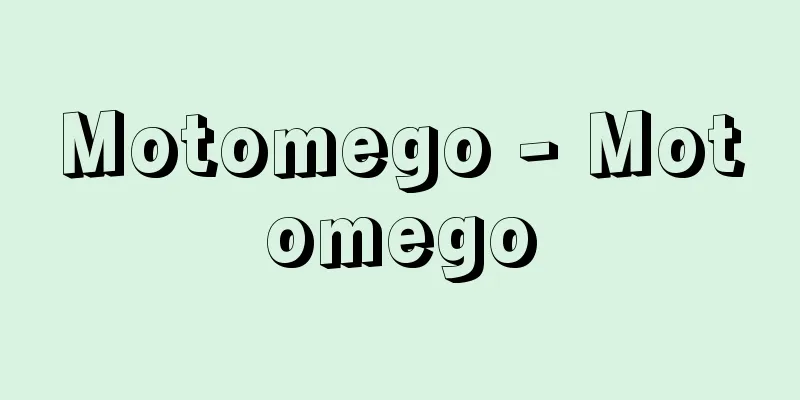Hindi - Hindigo (English spelling)

|
It belongs to the Aryan language family of the Indo-Iranian branch of the Indo-European language family and is generally divided into two groups: eastern and western. The eastern group includes Kosari, Awadhi, Bagheri, and Chhattisgarhi, and is spoken in the eastern and central parts of Uttar Pradesh and Madhya Pradesh, Bihar, and southern Nepal. The western group includes standard Hindi, known as Kaliboli, Urdu, the lingua franca of Muslims, Bangaloo, Brajbakkar, Bundeli, and Kannauji, and is spoken in the central and western parts of Uttar Pradesh, northern Madhya Pradesh, Himachal Pradesh, Haryana, and Rajasthan. Along with English, Hindi is used as an official language of India in the National Assembly and central government offices, and is also the official language of the states of Uttar Pradesh, Madhya Pradesh, Bihar, Haryana, Rajasthan, Himachal Pradesh, and the central government district of Delhi, etc. Outside of India, there are many Indian immigrants who speak Hindi in Africa, Guyana and Suriname in South America, and Fiji in the South Pacific, and if these people are included, the number of people who speak Hindi is thought to be over 200 million, and the number of people who understand it is thought to exceed 300 million. If we trace the historical development of standard Hindi, the language of the Delhi region, which developed around the 13th and 14th centuries under the influence of Shaurasini-Apabhramsha, a Middle Aryan language, first became the common language of Muslims living in North India, and then was accepted by the upper classes of Hindu society. This language is usually called Hindustani, but from the 14th to 15th centuries, it was taught to British officials at Fort William College, which was established in Calcutta (now Kolkata) in 1799, as a representative language of India, along with Urdu, which was established by incorporating a large amount of Persian and Arabic vocabulary, following the example of Dakni (Dakini) language that developed in the Deccan region. However, in order to compete with Urdu, Persian and Arabic vocabulary were eliminated from Hindustani and Sanskrit vocabulary was incorporated as much as possible, resulting in today's standard Hindi. Furthermore, Urdu is written in a Persian script from right to left, whereas Hindi is written in the Nagari script from left to right. [Takeshi Nara] "Hindi Dictionary" edited by Hisaya Doi (1975, Daigaku Shorin) " "Introduction to Hindi" by Hisaya Doi (1979, Tairyusha) " "SK Chatterji Indo-Aryan and Hindi (1960, Firma KL Mukhopadhyay, Calcutta)" "AR Kelkar Studies in Hindi-Urdu (1968, Deccan College, Poona)" [References] |Source: Shogakukan Encyclopedia Nipponica About Encyclopedia Nipponica Information | Legend |
|
インド・ヨーロッパ語族インド・イラン語派のアーリア諸語に属し、普通東西二つの語群に分けられる。東のグループは、コーサリー語、アワディー語、バゲーリー語、チャッティースガリー語などからなり、インドのウッタル・プラデシュ州およびマディヤ・プラデシュ州の東部および中央部、ビハール州、ネパール南部などの各地域で話されている。また、西のグループは、カリーボーリーといわれる標準ヒンディー語、イスラム教徒たちの共通語であるウルドゥー語、バーンガルー語、ブラジバーカー語、ブンデーリー語、カナウジー語などからなり、ウッタル・プラデシュ州の中央部および西部、マディヤ・プラデシュ州の北部、ヒマチャル・プラデシュ州、ハリアナ州、ラージャスターン州などの地域で話されている。 ヒンディー語は、英語とともにインドの公用語として国会や中央官庁において用いられており、ウッタル・プラデシュ州、マディヤ・プラデシュ州、ビハール州、ハリアナ州、ラージャスターン州、ヒマチャル・プラデシュ州、デリー中央政府直轄地区などの公用語ともなっている。インド国外においても、アフリカをはじめ、南米のギアナやスリナム、南太平洋のフィジー島などでヒンディー語を話すインドからの移民が多数おり、これらを含めるとヒンディー語の使用人口は2億数千万に上り、理解人口となると3億人を超すものと思われる。 標準ヒンディー語の歴史的発達の過程をたどってみると、13~14世紀ごろ中期アーリア諸語の一つであるシャウラセーニー・アパブランシャ語の影響を受けつつ発達したデリー地方の言語が、まず初めに北インドに住むイスラム教徒たちの共通語となり、やがてヒンドゥー社会の上層部の人々にも受け入れられるようになっていった。この言語は普通ヒンドゥスターニー語とよばれるが、14世紀から15世紀にかけ、デカン地方で発達したダクニー(ダキニー)語の例に倣い、ペルシア語やアラビア語の語彙(ごい)を豊富に取り入れて成立したウルドゥー語とともに、インドの代表的言語として1799年カルカッタ(現コルカタ)に設立されたフォートウィリアム・カレッジでイギリス人官吏に教えられた。しかし、こうしたウルドゥー語に対抗する形で、ヒンドゥスターニー語からペルシア語やアラビア語の語彙を排除し、できるだけサンスクリット語の語彙を取り入れることによって成立したのが今日の標準ヒンディー語である。なお、ウルドゥー語がペルシア系の文字で右から左へと書かれるのに対し、ヒンディー語はナーガリー文字で左から右へと書き表される。 [奈良 毅] 『土井久彌編『ヒンディー語小辞典』(1975・大学書林)』▽『土井久彌著『ヒンディー語入門』(1979・泰流社)』▽『S. K. ChatterjiIndo-Aryan and Hindi (1960, Firma K. L. Mukhopadhyay, Calcutta)』▽『A. R. KelkarStudies in Hindi-Urdu (1968, Deccan College, Poona)』 [参照項目] |出典 小学館 日本大百科全書(ニッポニカ)日本大百科全書(ニッポニカ)について 情報 | 凡例 |
<<: Vindhya Range (English spelling)
>>: Binturong - Binturong (English spelling)
Recommend
émail champlevé (English) emailchampleve
...When the finished product is finished with a m...
House of Representatives - shugiin
In a bicameral parliament, the House of Represent...
Drupe - Drupe
A type of berry that has a hard core in the center...
Ammonia-excreting animals
This is an animal that excretes nitrogen produced ...
Quadrilateri Region - Quadrilateri Region
…the name of the area in Eastern Europe where the...
Ishigaki Eitaro
Born: December 1, 1893, Higashimuro, Wakayama [Die...
Fumae (English spelling) floor
A mining term referring to the floor of a tunnel o...
Educational Kanji - Kyoiku Kanji
This refers to kanji that are deemed necessary to ...
Konvaleszenz (Complete)
(1) In the Civil Code, a legal act that is invalid...
Vitrification - Touka (English spelling)
When a melt or a mixed solution is cooled, a kind...
Ancient Records of Great Japan - Dainihonkokiroku
This is a series of historical documents on Japan...
Quercus salicina - Quercus salicina
An evergreen tall tree of the Fagaceae family (AP...
Ophthalmomaxillary brown-blue nevus - Ganjogakukasseishokubohan
…Those found on the face and limbs are called ect...
Avignon - Avignon (English spelling)
The capital of Vaucluse department in southeaster...
Suspension of employment - Suspension of employment
…(1) In the case of general public servants, the ...









